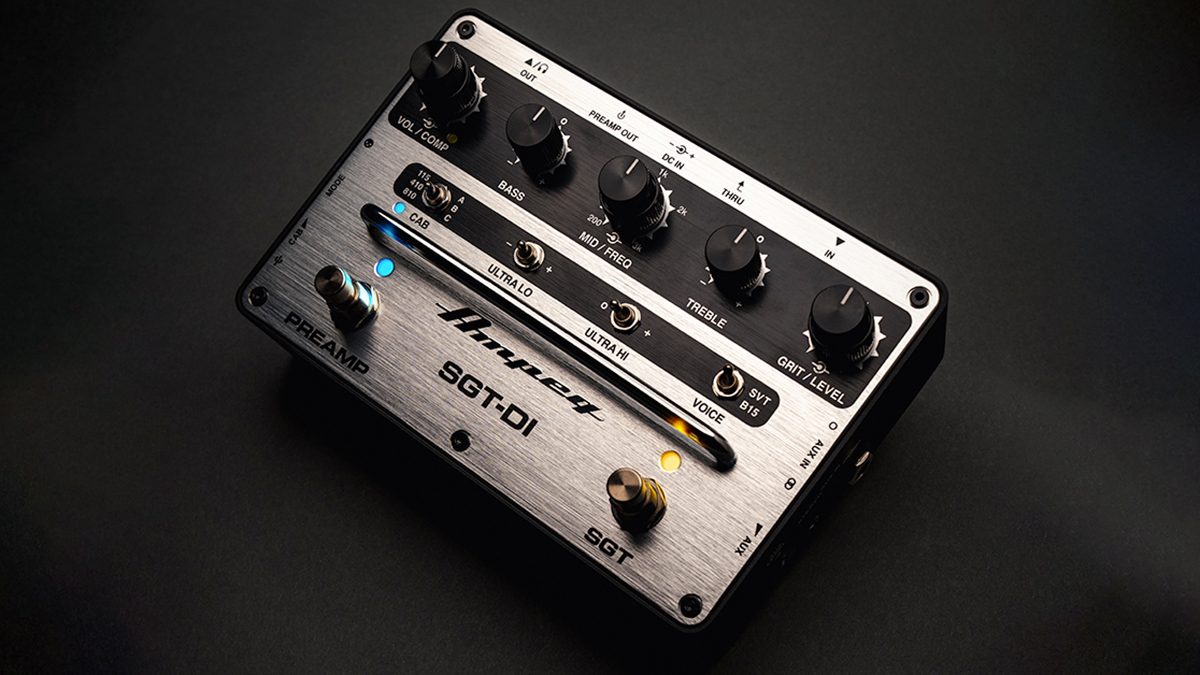Guitar World Verdict
The functionality of this DI, together with the ease of use and routing options on offer, make it an excellent addition to any rig, be it at home, in the studio or on stage. Ideal for serious tone lovers seeking some classic Ampeg sounds.
Pros
- +
Great range of features.
- +
Convincing amp and cabinet models.
- +
Ultra-hi and ultra-lo switches are a real bonus.
Cons
- -
The compressor didn’t live up to our expectations.
You can trust Guitar World
Ampeg has a proven record of producing high-quality amps and cabs with more than a nod towards vintage bass tones. The company’s stompboxes have also worked their way into the rigs of many top-name players.
With its latest launch, Ampeg is making a bold claim that the new SGT-DI gives bassists ‘an entire rig in a single stompbox’, but in trying to cram so much into one piece of kit, will some of the essence of what we have come to know and love about their products be lost in the mix?
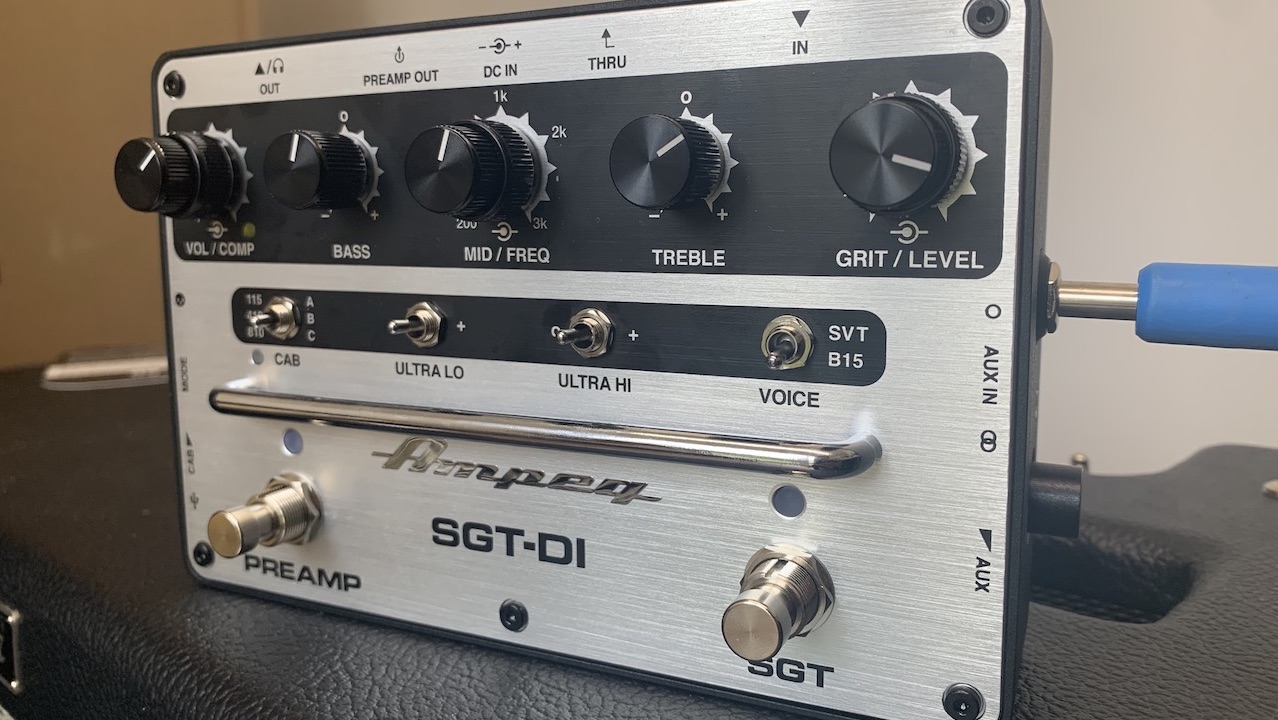
On first look the SGT-DI seems a little daunting, with its array of multiple inputs, outputs, controls and switches, but there’s a satisfying weight to it that gives you confidence even before you plug in. On closer inspection everything is tight and clean, well laid out and clearly labelled.
Two LEDs (one for each footswitch) light up when the switches are stomped on to give the user no doubt of the pedal’s status. The footswitch on the left turns the preamp on and off, and the right-hand switch activates the ‘Super Grit Technology’ overdrive circuit, which you can manipulate further using the stacked Grit and Level controls. A toggle switch also gives you access to the tube-like grind of Ampeg’s benchmark SVT or the signature warmth of a B15.
Aside from the overdrive circuit, the SGT-DI also features Ampeg’s first cab simulator, which offers a choice of three Ampeg factory cabs. There’s also an option to generate and upload your own simulations via Ampeg’s Impulse Response Loader application via a USB port.
Other notable features include lo- and hi-cut filters, a 3-band EQ with a sweepable mid control, and an onboard compressor. The design also incorporates a ¼-inch jack input, a thru output to run a signal to an amp, auxiliary jack inputs, a preamp out and an XLR output for sending a signal to a mixing board. Two small click switches either side of the XLR socket correspond to ground lift and output selection.
How does it sound? Plugging a bass guitar into the input socket, and with the output set to ‘cab’, we sent the signal from the XLR to an Apogee Duet audio interface, and set up to record. We were immediately impressed at how well the SGT-DI controlled the instrument’s output, making it easy to set levels and achieve an even bass sound.
The EQ is sensibly voiced, though less effective at high gain levels, but thanks to the strength of the preset sounds you probably won’t need the EQ too often – both the lo- and hi-cut toggle switches are perfect for cleaning up a muddy bass sound or one that’s too brittle.

We were also pleasantly surprised by the character of the overdrive circuit. With the Level control turned all the way up, it yields a fairly raucous and gritty crunch, and at lower settings it adds a more subtle, but very pleasing bite and definition to the sound. While the tone doesn’t quite match up to the full-on growl of an original SVT, it does sound bigger than you might expect it ought to.
You can add some additional warmth via the cab simulator, which remains another useful option for recording or practising when plugging into a bass amp is not an option. The compressor doesn’t seem to offer much variation, but if you’re looking for something subtle, it could be for you.
Being an Ampeg product our expectations were high, and on plugging in the initial findings were very good. What at first looked like a potentially complicated piece of equipment is actually very simple to use, and all the key functions work perfectly, never getting in the way of simply producing a great bass sound.
The amp and cab simulations may not be quite as breathtaking as the real thing, but they have more than enough flavour of the iconic rigs that they’re based on. We could also mention the price being a bit prohibitive, but quality this good is going to have added value. If you are looking for a feature-packed ‘out of the box’ DI this would certainly fit the bill.
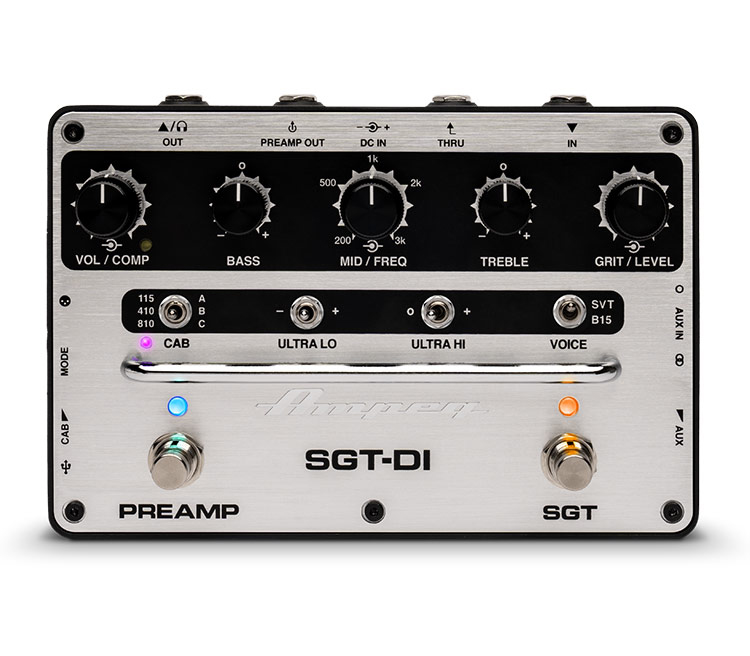
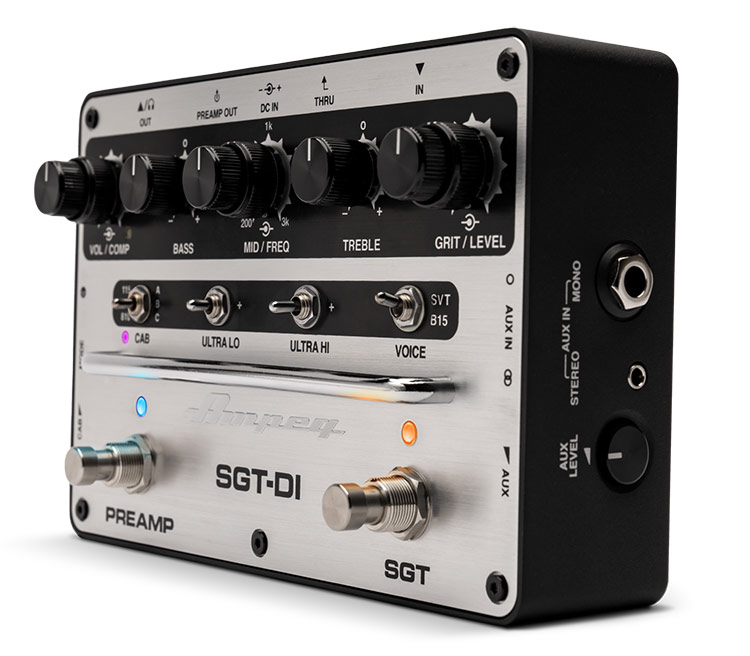
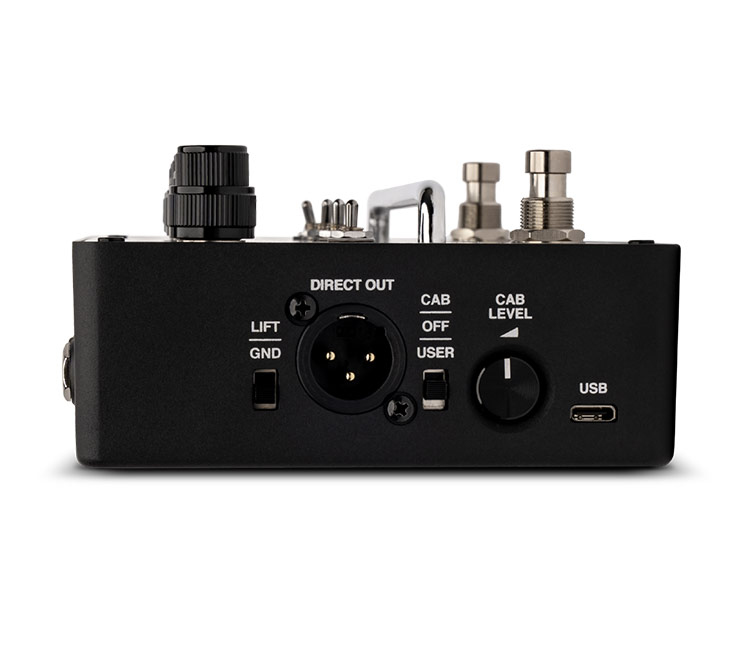
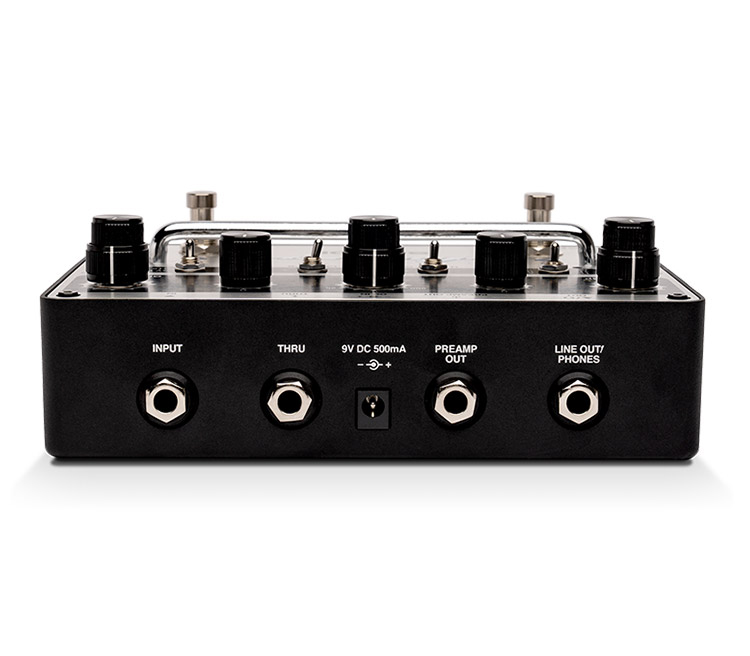
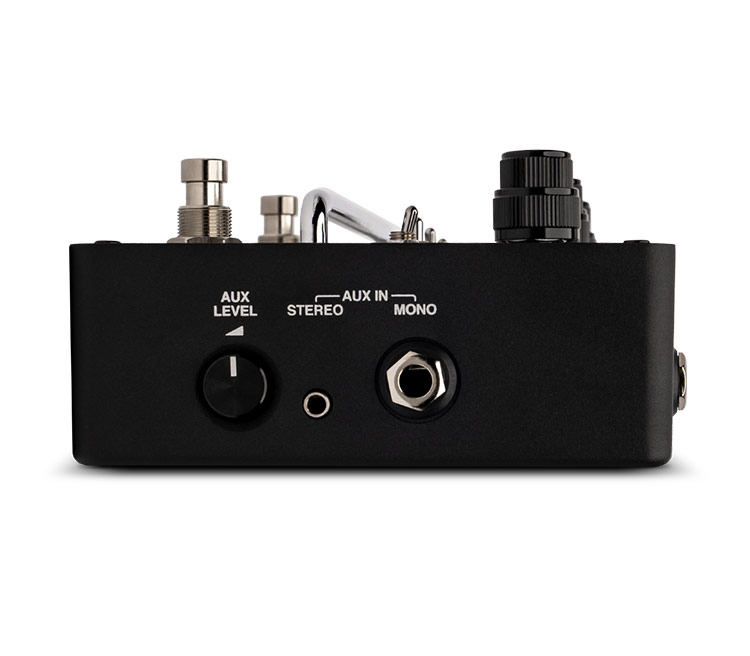
Specs
- PRICE: $559
- MADE IN: China
- CONTROLS: Stacked Volume/Compressor control, 3-Band EQ with a concentric, sweepable mid-range frequency selector, stacked Grit/Level control, Cab selector switch, ultra-hi and ultra-lo switches, Voice switch.
- FEATURES: Super Grit Technology (SGT) circuit, SVT & B15 voicing circuit, onboard IR loader/cab simulator, built-in variable 10:1 compressor, aux/headphone section with a push-and-release volume control, balanced XLR and 1/4" line outputs with a ground lift switch.
- POWER: 9V DC power supply included
- WEIGHT: 0.85 kg
- DIMENSIONS: 65 x 189 x 126mm
- CONTACT: Ampeg

Nick Wells was the Editor of Bass Guitar magazine from 2009 to 2011, before making strides into the world of Artist Relations with Sheldon Dingwall and Dingwall Guitars. He's also the producer of bass-centric documentaries, Walking the Changes and Beneath the Bassline, as well as Production Manager and Artist Liaison for ScottsBassLessons. In his free time, you'll find him jumping around his bedroom to Kool & The Gang while hammering the life out of his P-Bass.
“The original Jordan Boss Tone was probably used by four out of five garage bands in the late ’60s”: Unpacking the gnarly magic of the Jordan Boss Tone – an actual guitar plug-in that delivers Dan Auerbach-approved fuzz
“This is a powerhouse of a stompbox that manages to keep things simple while offering endless inspiration”: Strymon EC-1 Single Head dTape Echo pedal review
